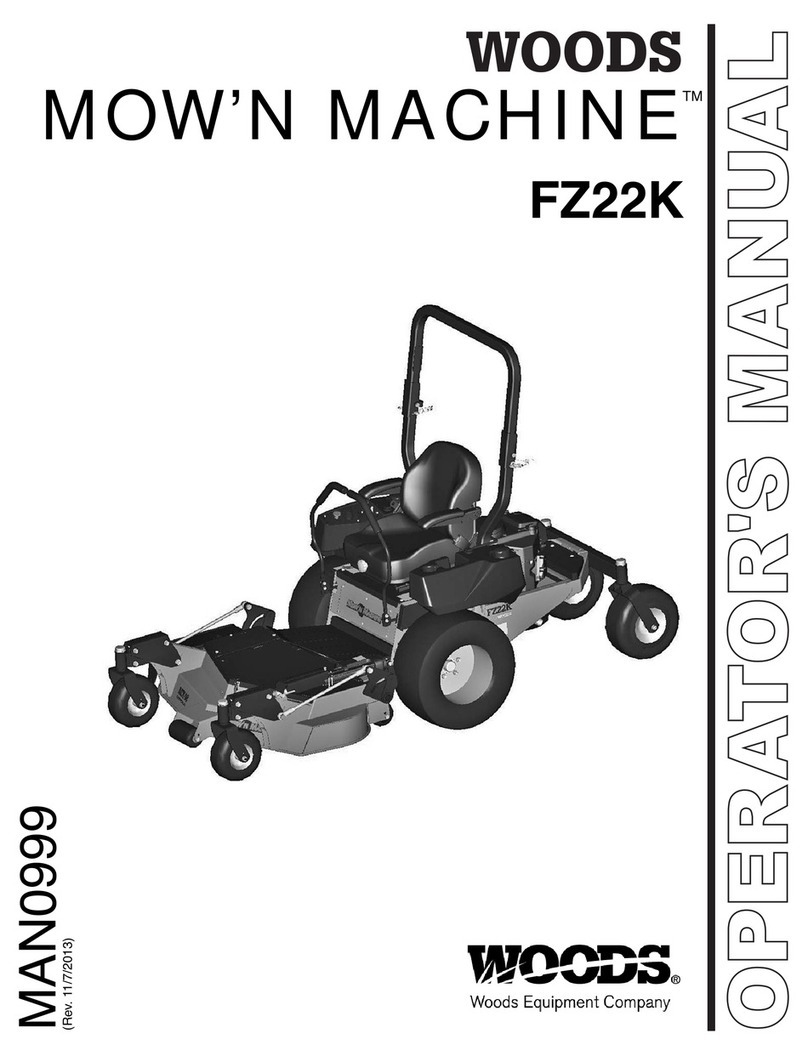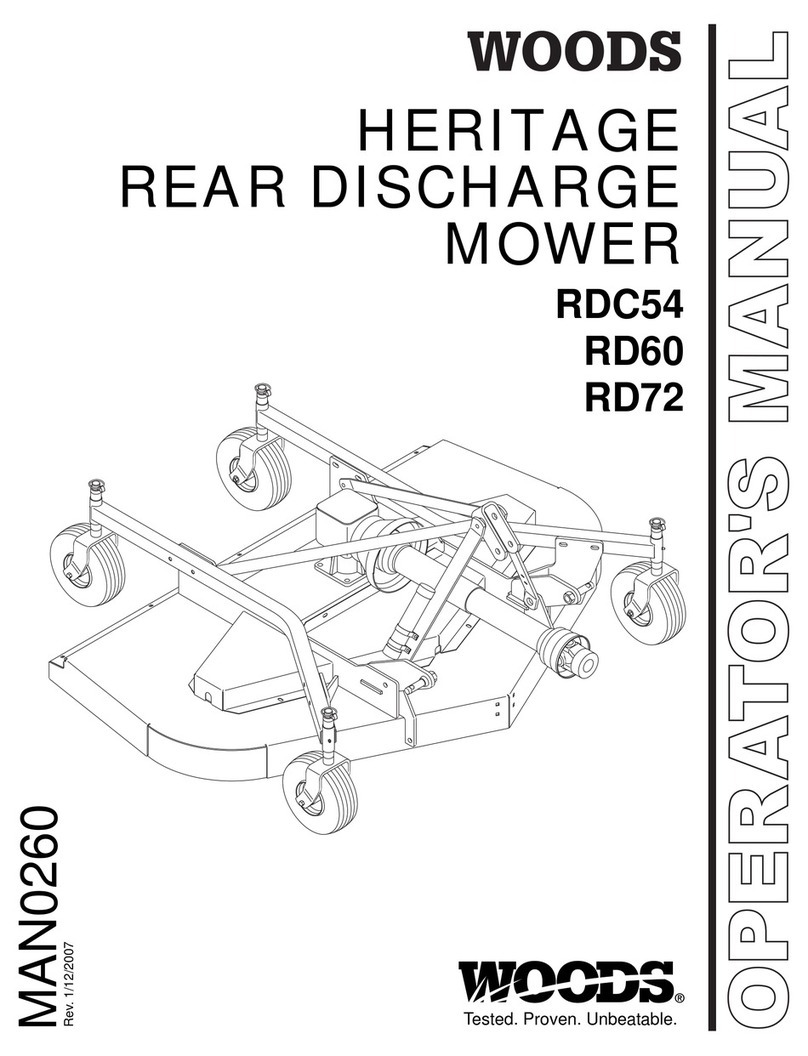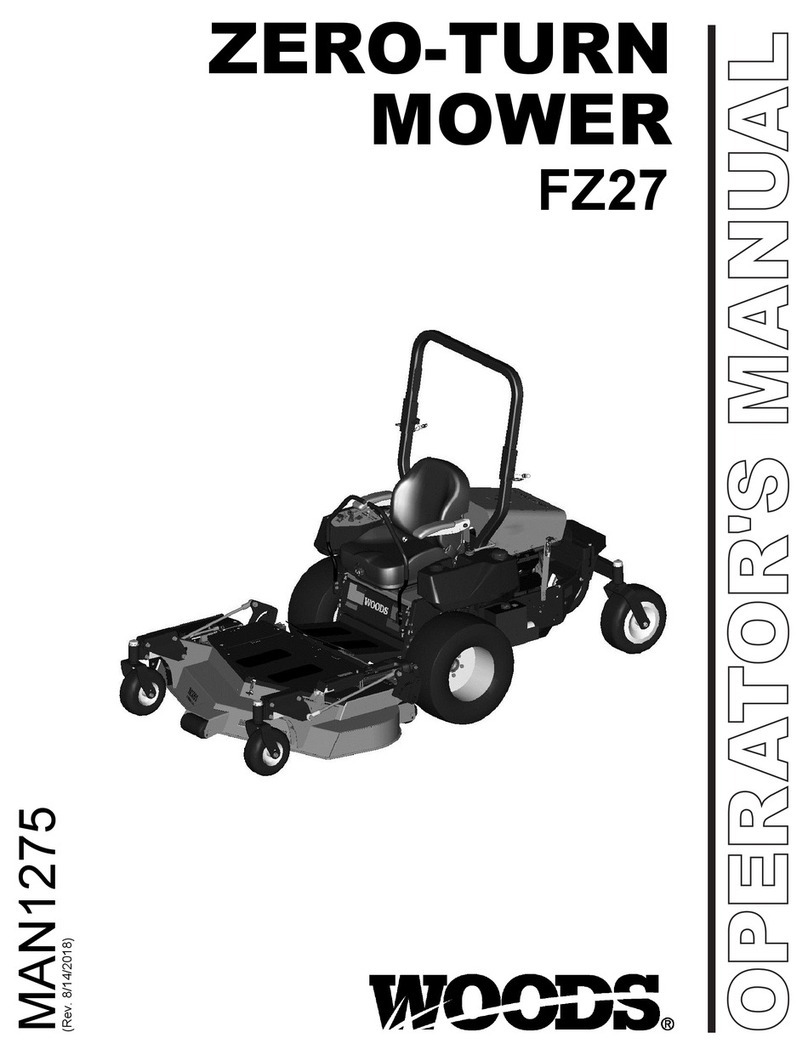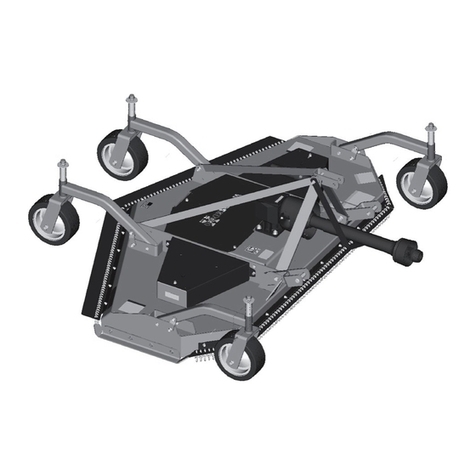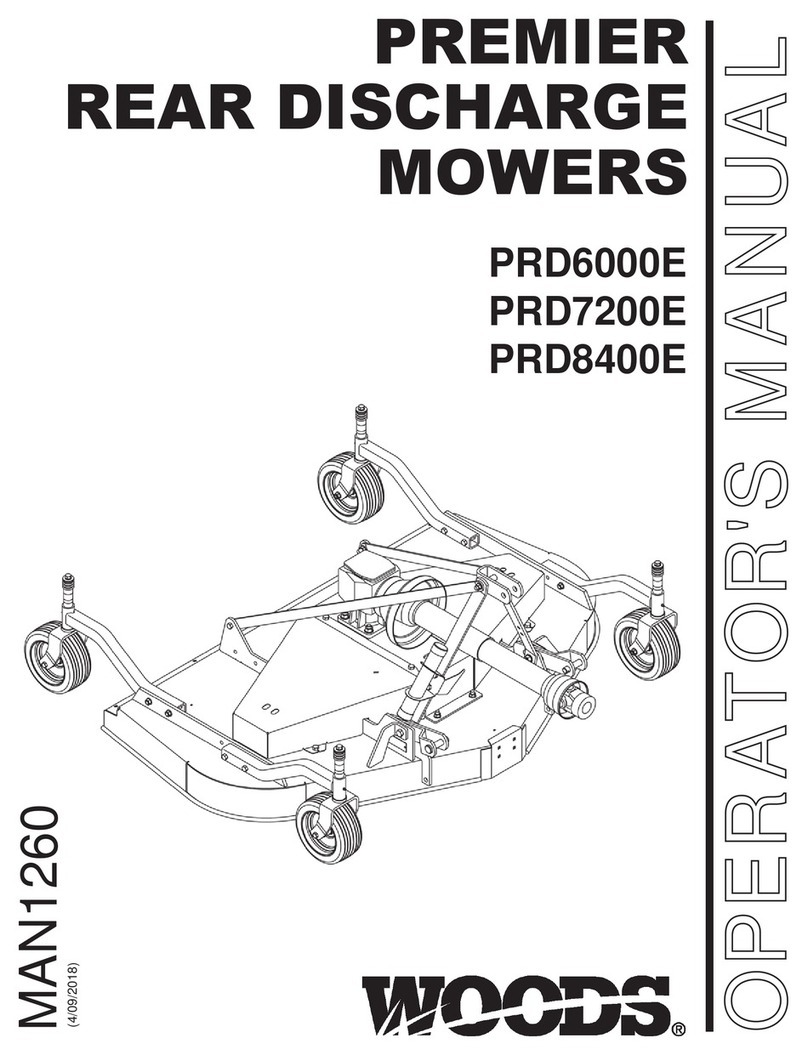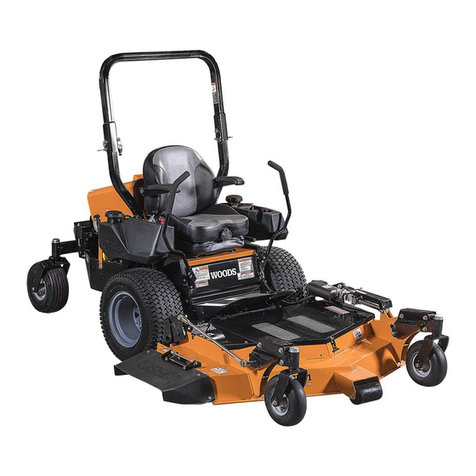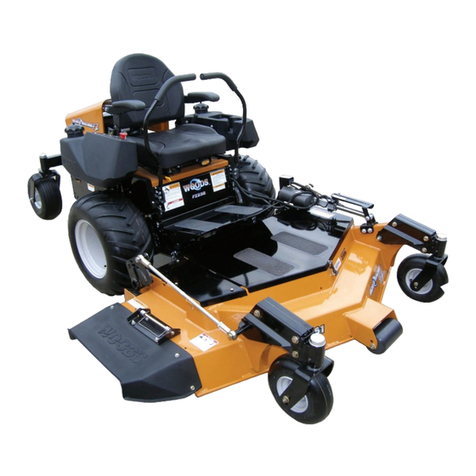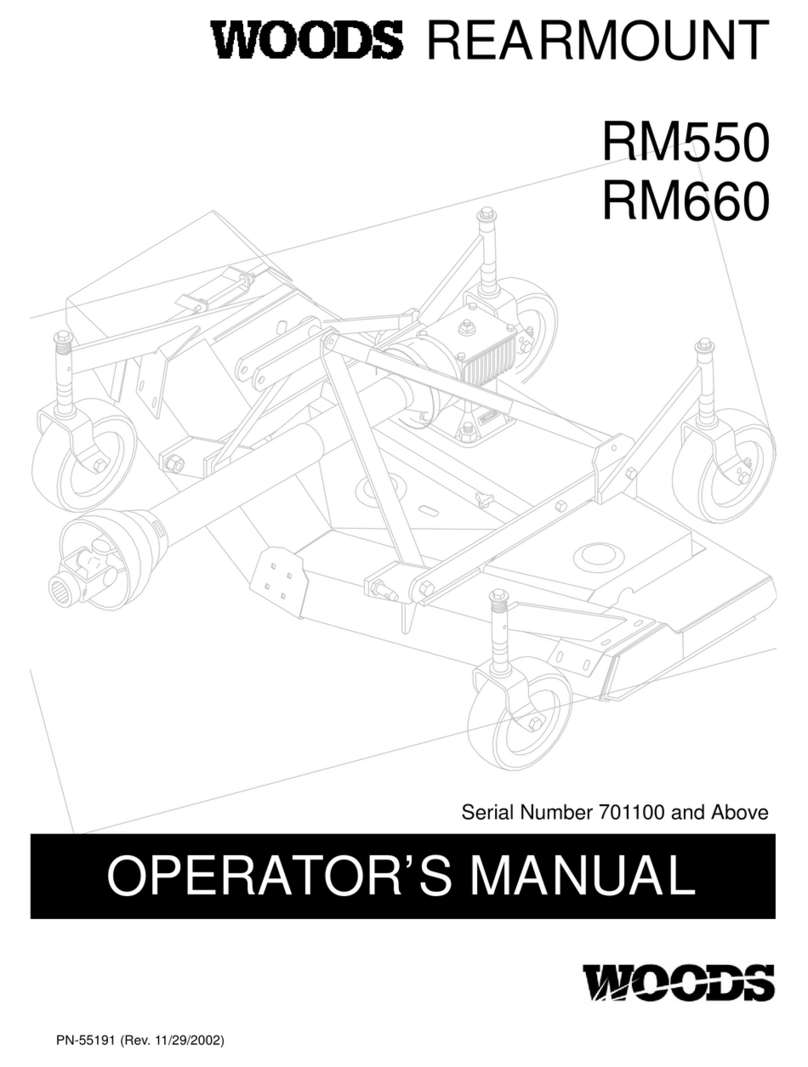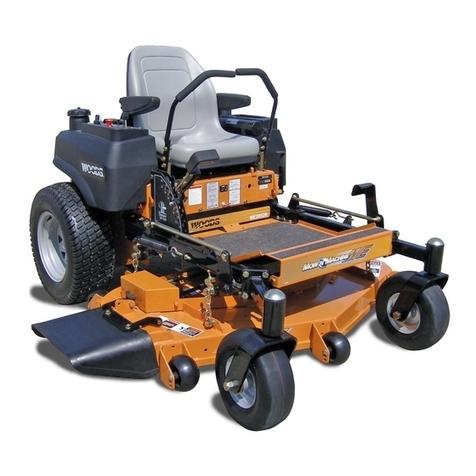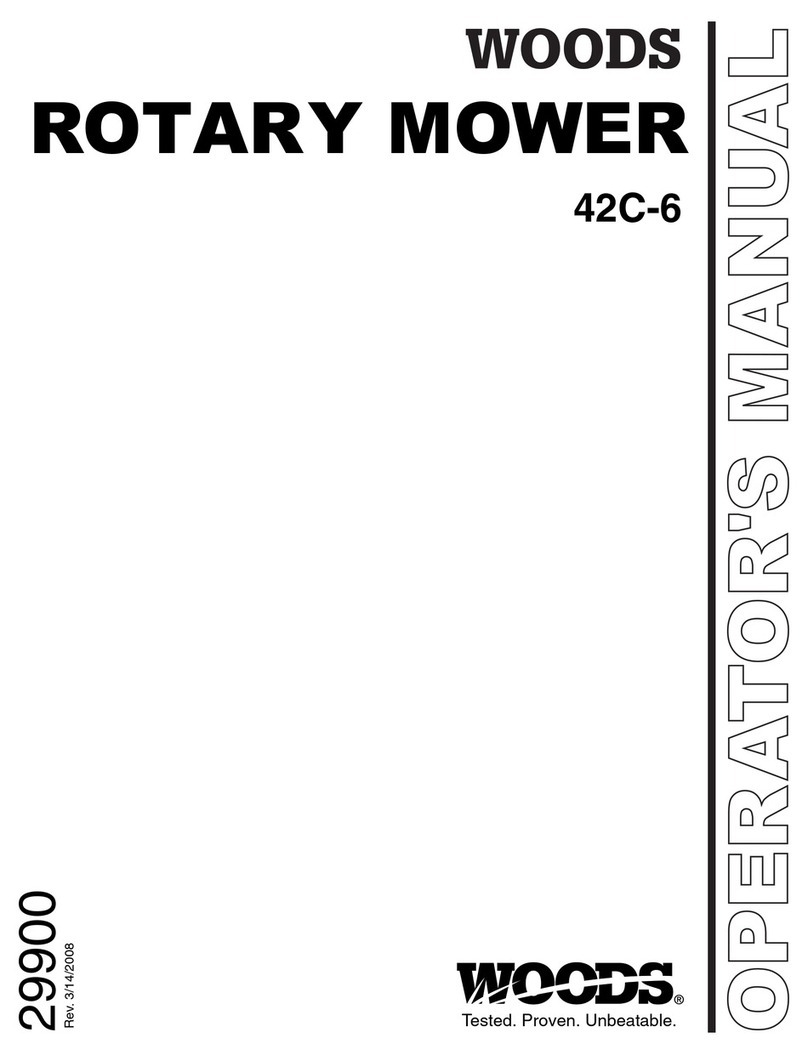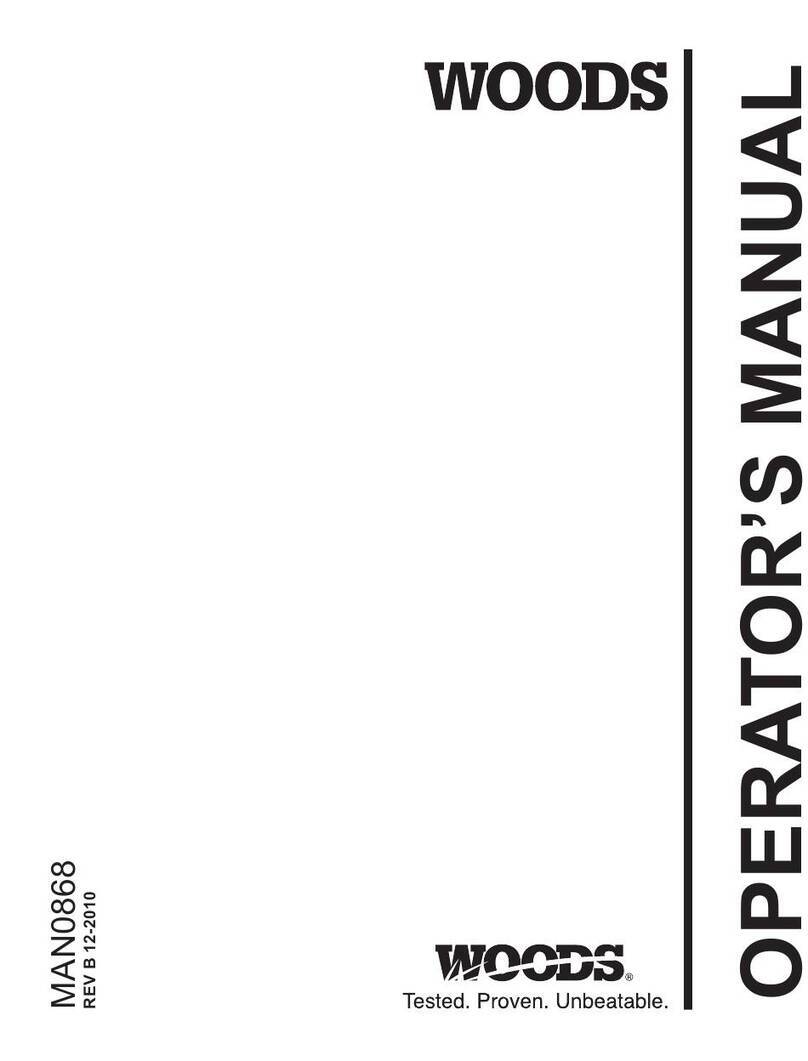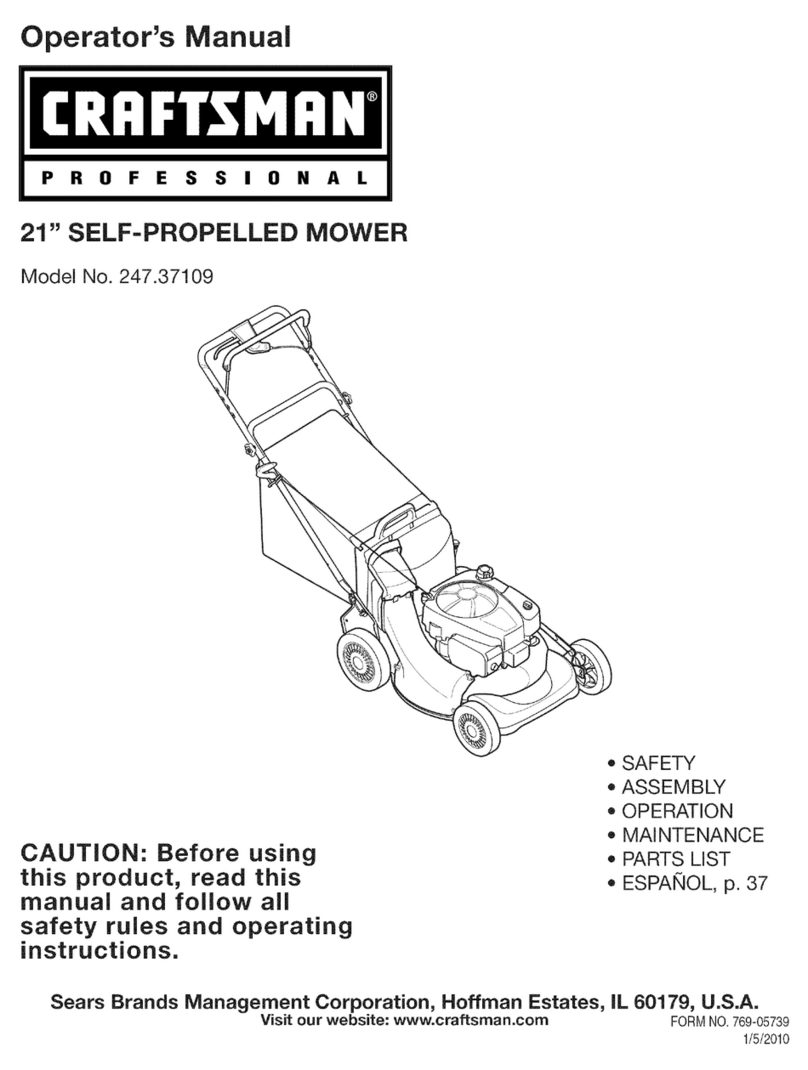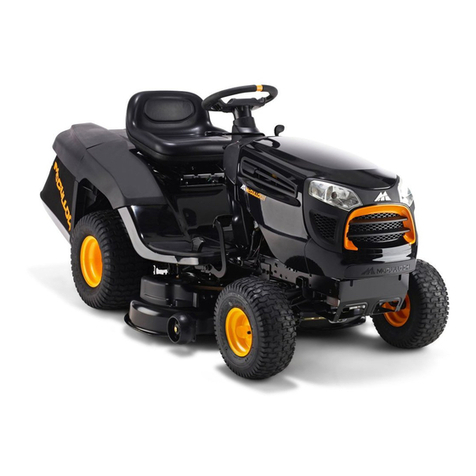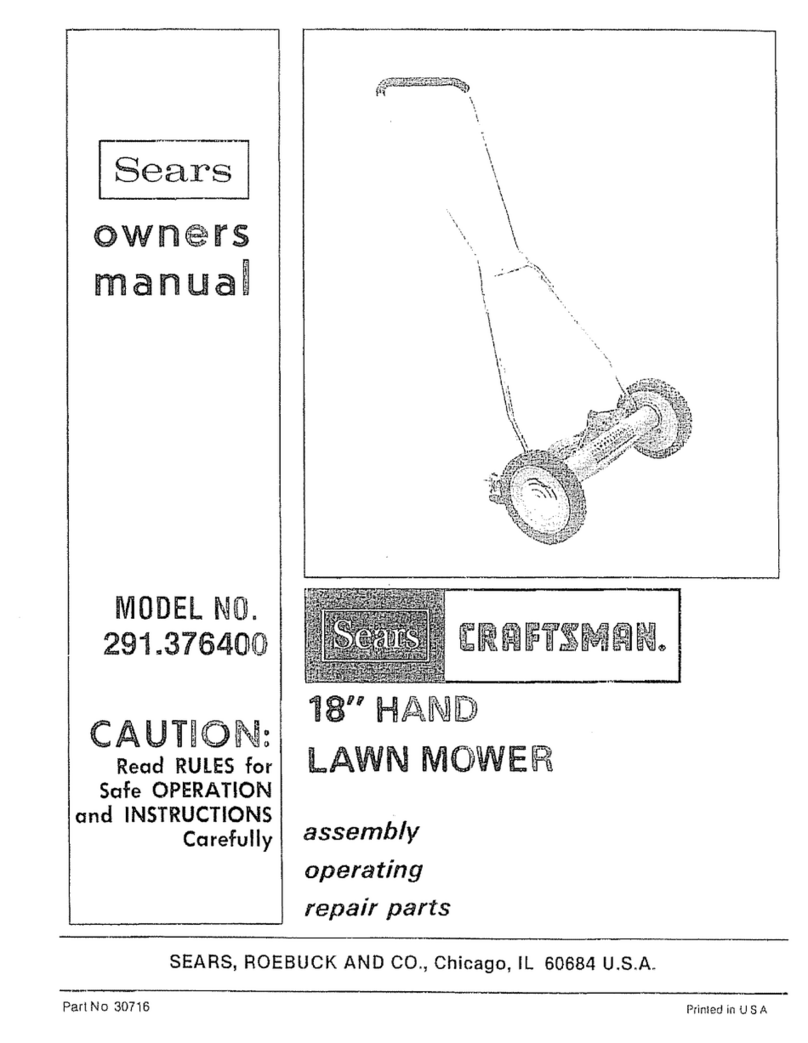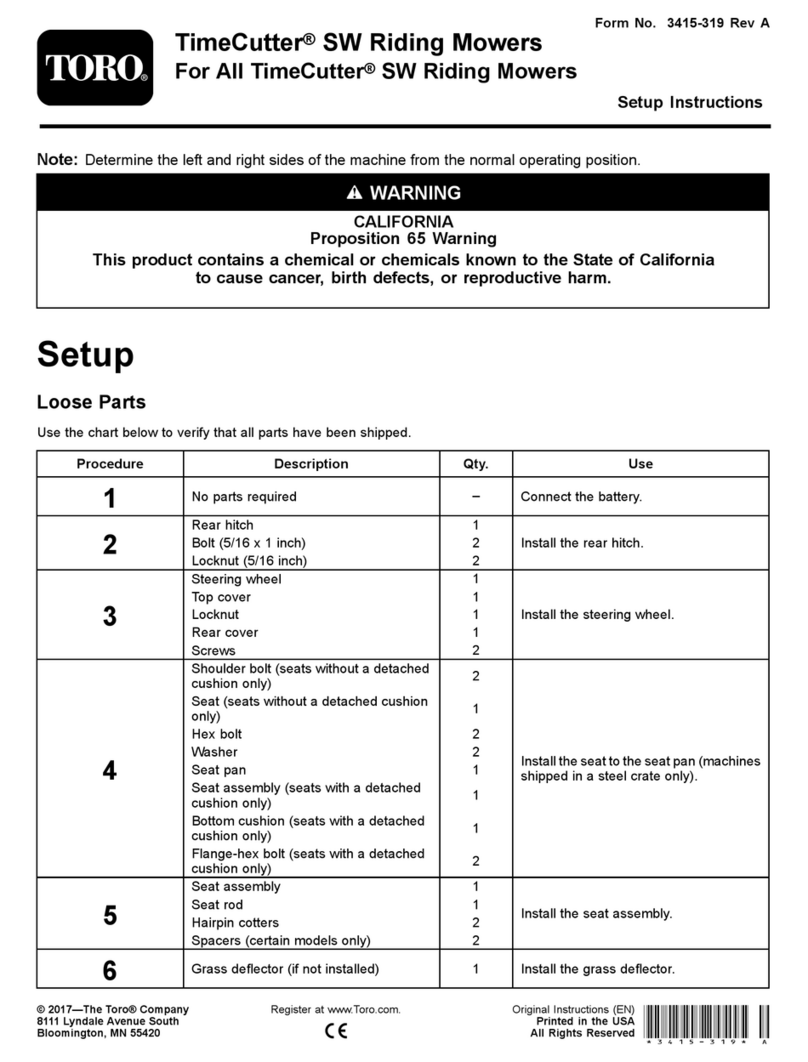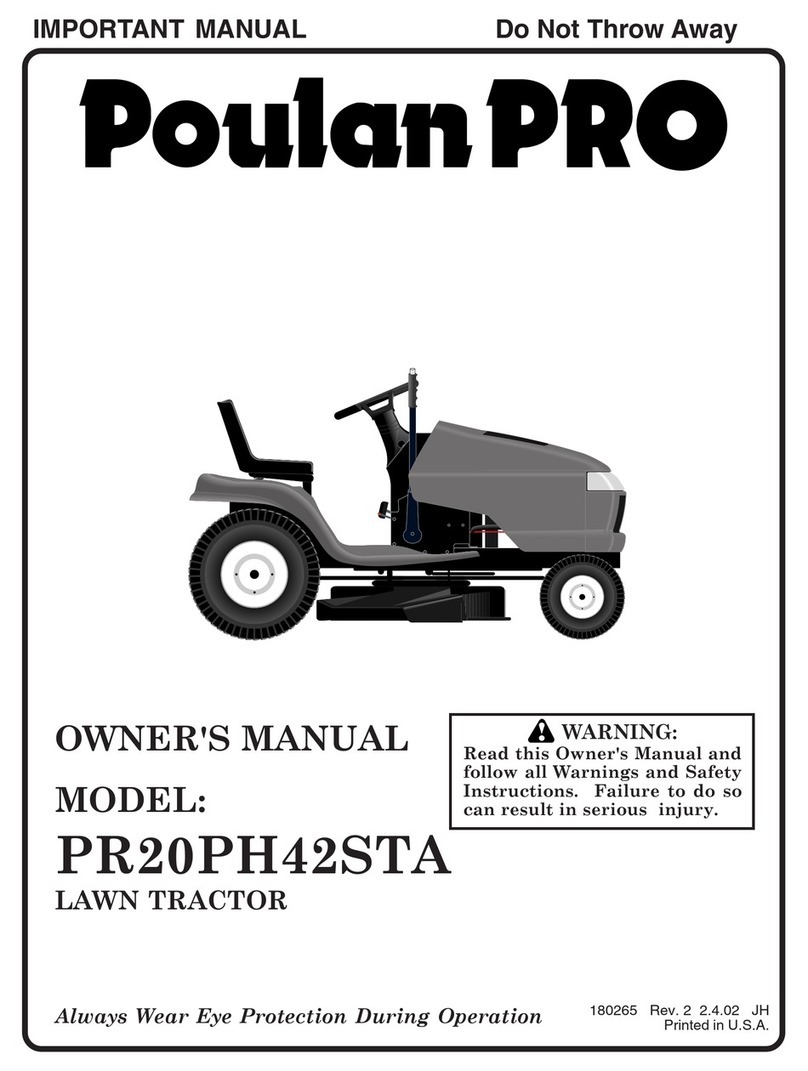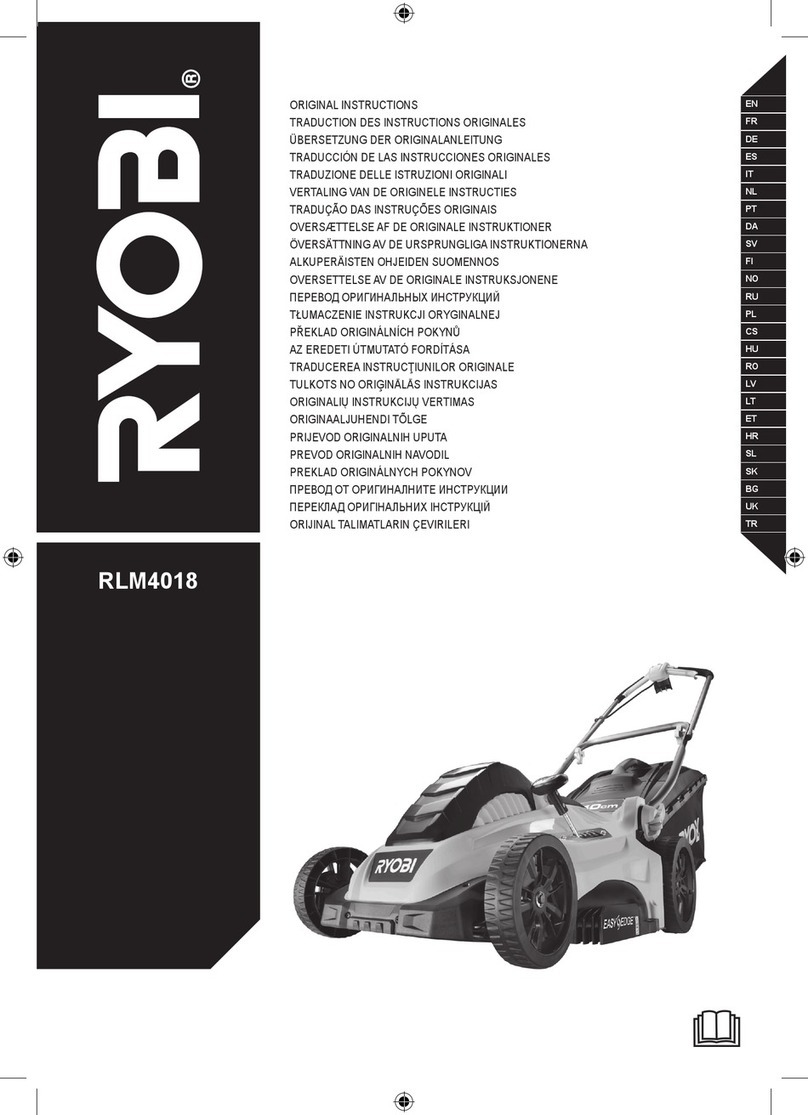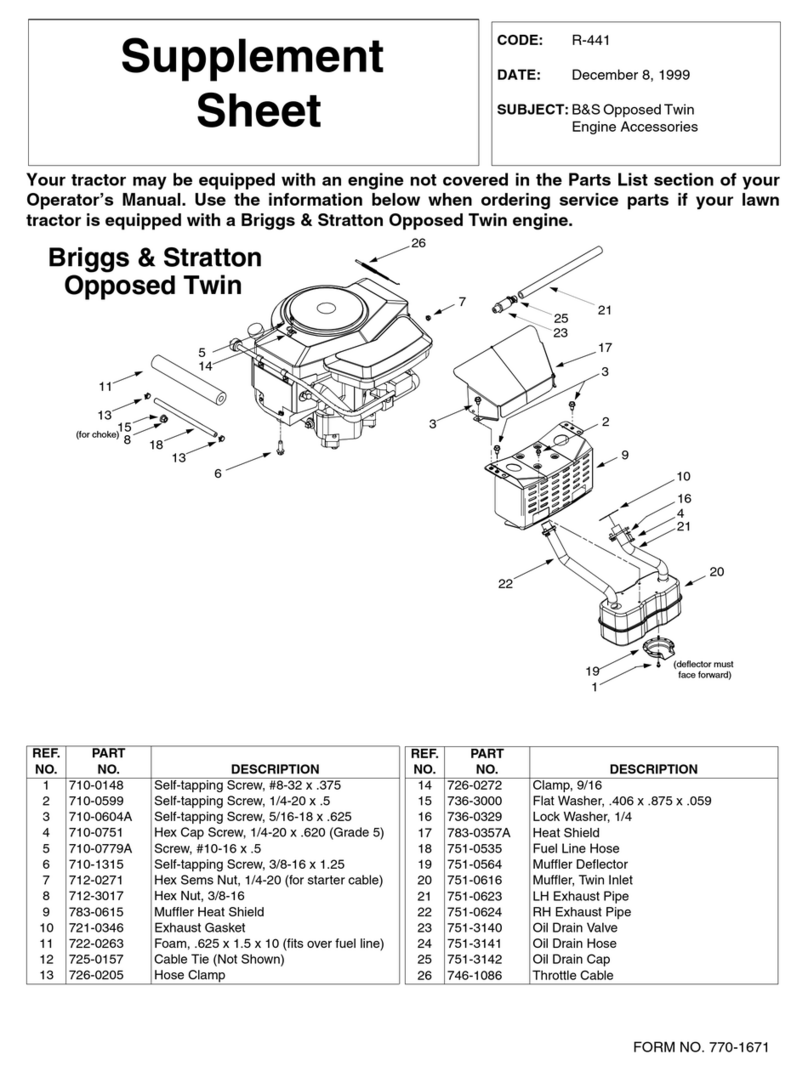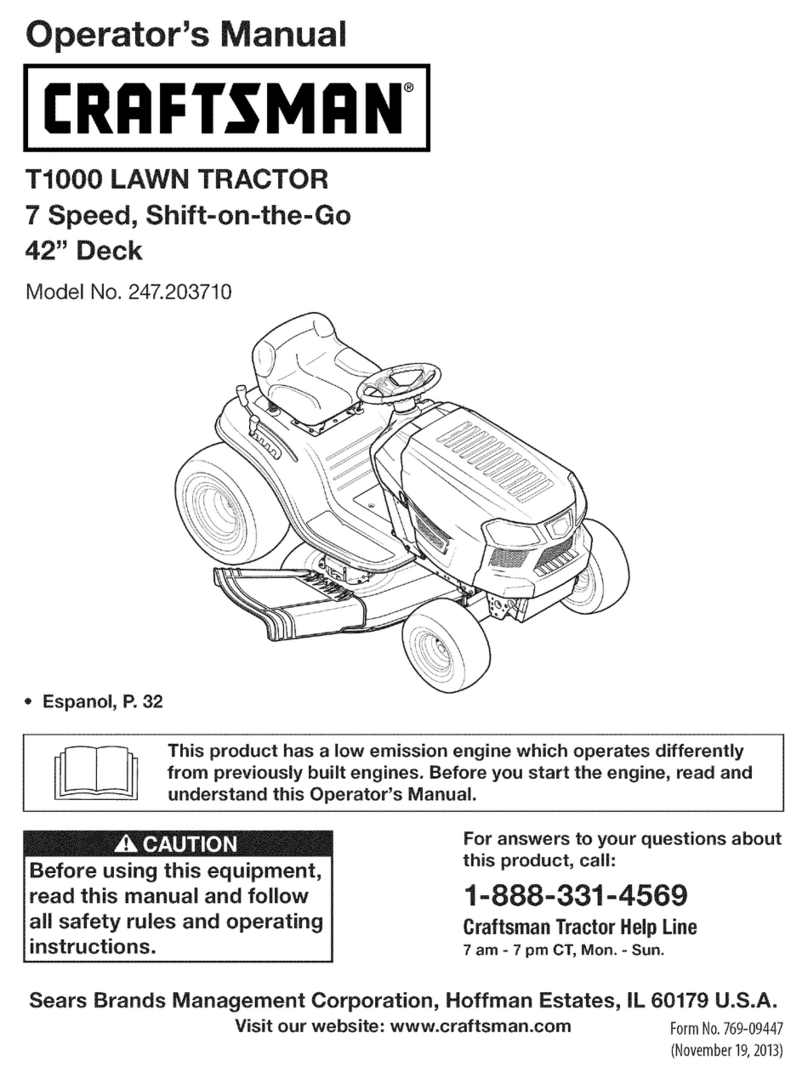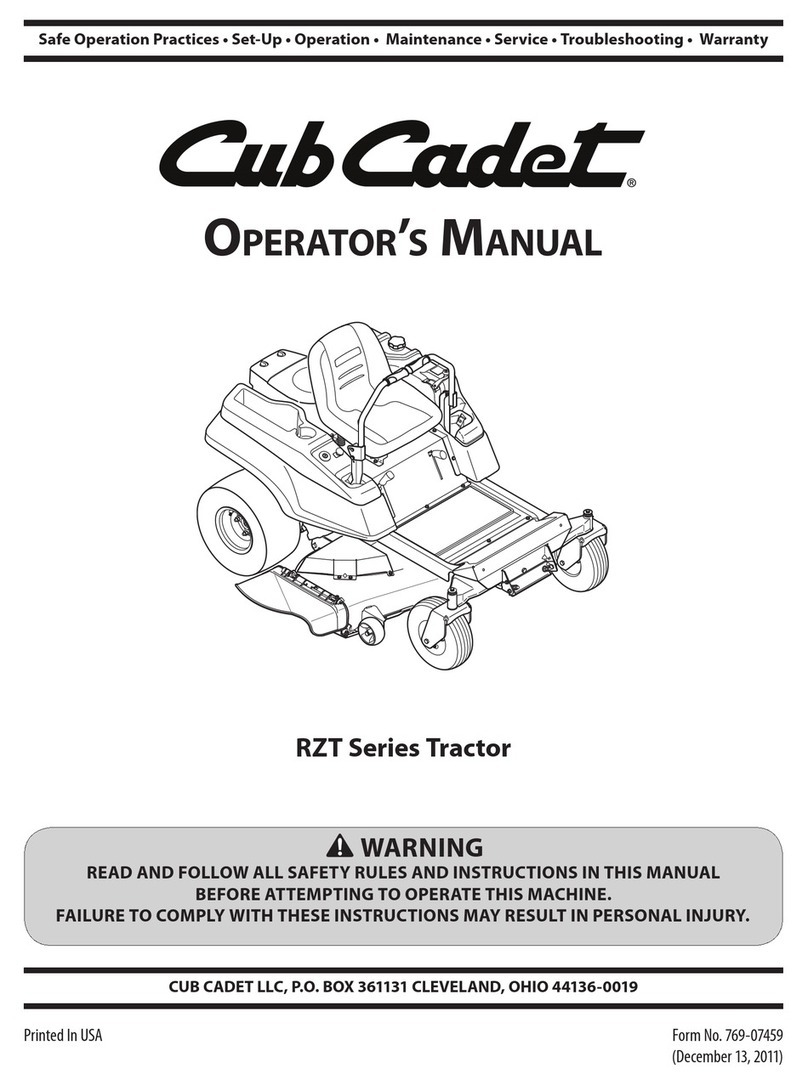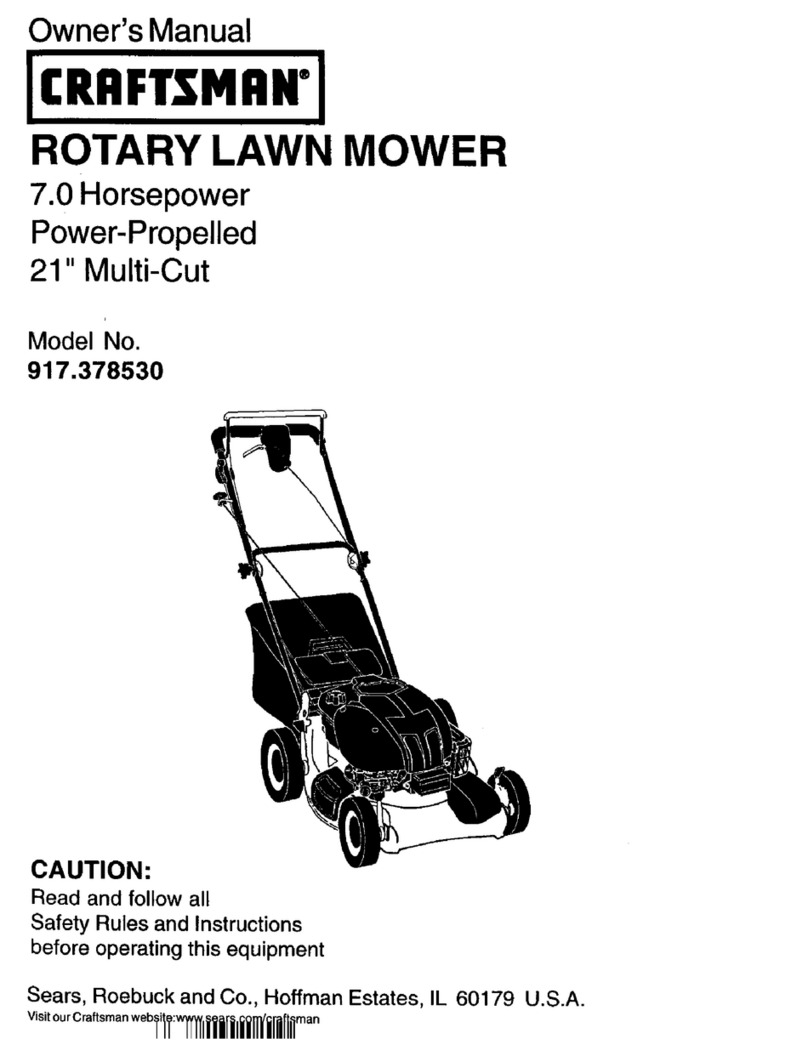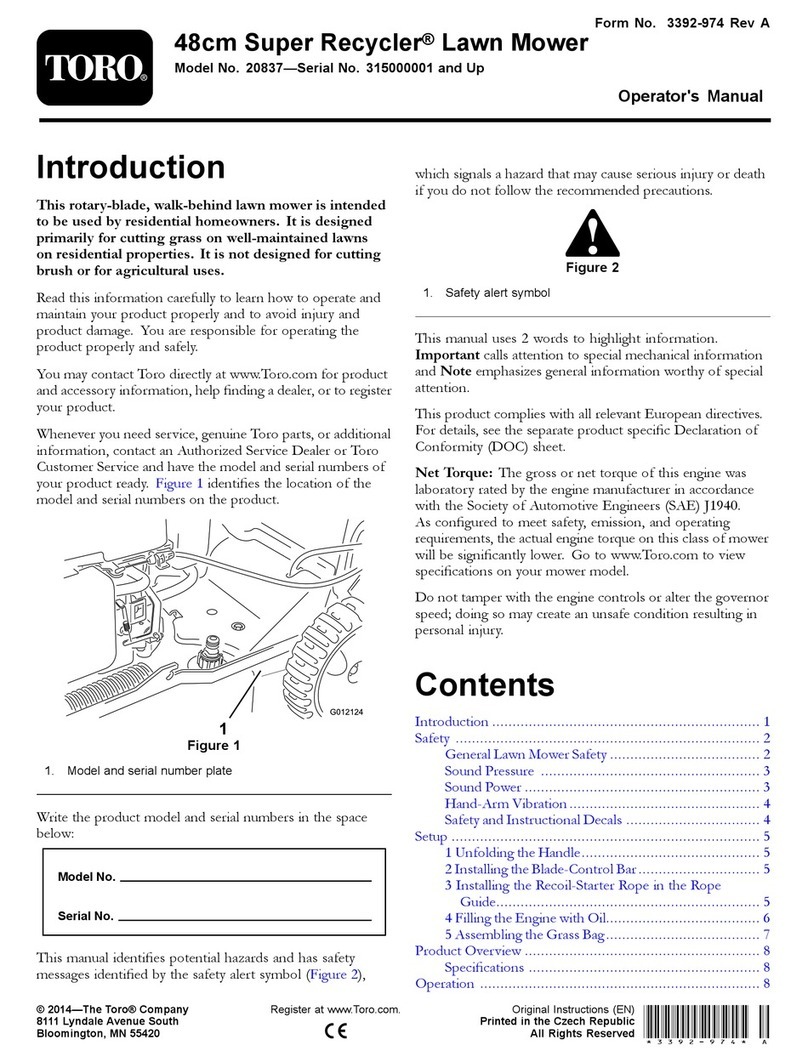
Operation 13
20944 (Rev. 2/3/2006)
manual ratchet adjustment link or optional hydraulic
cylinder.
An optional stroke control kit is available for use with
the optional hydraulic cylinder. When a desired cutting
height is pre-set and the stroke control kit is placed on
the cylinder rod, you can raise the mower and return
easily to the pre-set height.
PRE-OPERATION CHECKLIST
(Owner Responsibility)
___ Review and follow all safety rules and safety
decal instructions on page 5 through page 9.
___ Check that all safety decals are installed and in
good condition. Replace if damaged.
___ Check that all shields and guards are properly
installed and in good condition. Replace if dam-
aged.
___ Check that all hardware and cotter pins are prop-
erly installed and secured.
___ Check to ensure blades are sharp, in good condi-
tion, and installed correctly. Replace if damaged.
___ Check that equipment is properly and securely
attached to tractor.
___ Make sure driveline spring-activated locking pin
or collar slides freely and is seated firmly in trac-
tor PTO spline groove.
___ Before starting tractor, check all equipment drive-
line guards for damage and make sure they
rotate freely on all drivelines. Replace any dam-
aged guards. If guards do not rotate freely on
drivelines, repair and replace bearings before
operating.
___ Make sure the driveline guards and tether chains
are in good condition. Guards must rotate freely
on driveline. Fasten tether chains as instructed to
the tractor and the equipment.
___ Inspect area and remove stones, branches or
other hard objects that might be thrown, causing
injury or damage.
___ Do not allow riders.
___ Check all lubrication points and grease as
instructed in “Service, Lubrication Information”.
Make sure the PTO slip joint is lubricated and that
the gearbox fluid levels are correct.
___ Set tractor PTO at 540 rpm.
___ Check that all hydraulic hoses and fittings are in
good condition and not leaking before starting
tractor. Check that hoses are not twisted, bent
sharply, kinked, frayed or pulled tight. Replace
any damaged hoses immediately.
___ Raise and lower equipment to make sure air is
purged from hydraulic cylinders and hoses.
___ Make sure tractor ROPS or ROPS CAB and seat
belt are in good condition. Keep seat belt
securely fastened during operation.
___ Before starting engine, operator must be in trac-
tor seat with seat belt fastened. Place transmis-
sion in neutral or park, engage brake and
disengage tractor PTO.
STARTING AND STOPPING MOWER
Power for operating the mower is supplied by tractor
PTO. Do not exceed tractor manufacturer's rated PTO
speed of 540 rpm maximum. Know how to stop tractor
and mower quickly in case of an emergency.
Should mower become plugged, causing belt to slip,
immediately maneuver equipment into a previously cut
area and allow mower to clear accumulated material.
Continue running at least two minutes, allowing pulleys
to cool. Stopping the mower with belt in contact with a
very hot pulley will bake and ruin belt.
Stop power unit and equipment immediately
upon striking an obstruction. Turn off engine,
remove key, inspect, and repair any damage before
resuming operation.
OPERATING TECHNIQUE
Proper ground speed will depend upon the terrain and
the height, type and density of material to be cut. Nor-
mally, ground speed will range from two to five mph.
Tall dense material should be cut at a low speed, while
thin medium-height material can be cut at a higher
ground speed.
Always operate tractor PTO at 540 rpm; this is neces-
sary to maintain proper blade speed and produce a
clean cut.
Under certain conditions, tractor tires may roll some
grass down and prevent it from being cut at the same
height as the surrounding area. When this occurs,
reduce tractor ground speed but maintain 540 rpm PTO
speed. The lower ground speed will permit grass to at
least partially rebound.
Under some conditions, grass will not rebound enough
to be cut evenly. In general, lower cutting heights give a
more even cut with less tendency to leave tire tracks.
However, it is better to cut grass frequently rather than
too short. Short grass deteriorates rapidly in hot
weather and invites weed growth during growing sea-
sons. Follow local recommendations for the suitable
cutting height in your area.




















